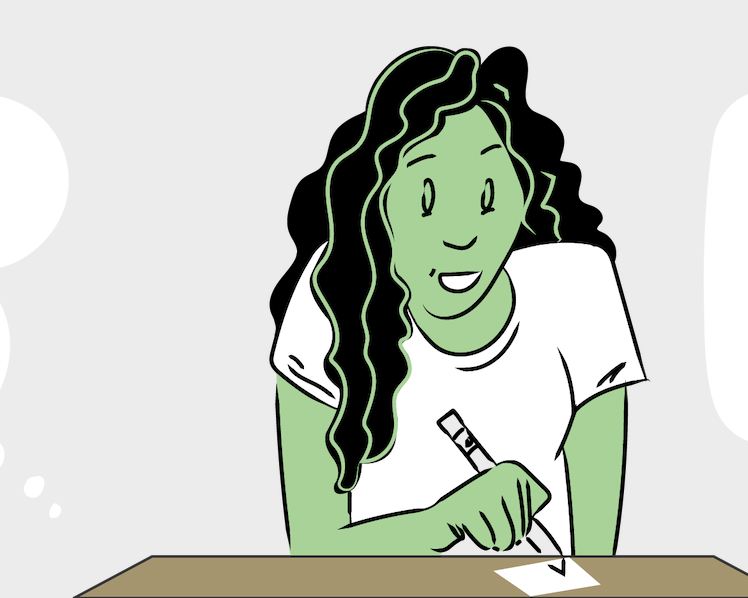Summary
In this session, participants will explore authentic strategies that promote comprehension across content areas. They will then make connections to these strategies and opportunities in their own classrooms to support college and career readiness.
Essential Questions
What is comprehension?
What comprehension skills support college and career readiness? How and why?
Snapshot
Engage
Explore
Explain
Extend
Evaluate
Materials List
Comprehension Slides
Power Tools for Comprehension Agenda
Instructional Strategy Note Sheet
Constructed Cube Template (or cubes or dice with sides labeled as "Describe," "Associate," "Compare," "Analyze," "Apply," and "Argue for or Against")
Comprehension Mind Map template
Science Reading, "Cystic Fibrosis" from the Genetic Science Learning Center
Social Studies Reading, "The Nuremberg Trials" from the United States Holocaust Memorial Museum
ELA Reading, "Our Deportment, or the Manners, Conduct, and Dress of Refined Society" by John H. Young
Math Reading, "ADA Accessibility" Letter
Reciprocal Teaching Role Cards from Power Tools for Adolescent Literacy: Empowering Strategic Learning
Alternative Role Cards from Power Tools for Adolescent Literacy: Empowering Strategic Learning
Chapter 13: Cubing from MAX Teaching with Reading and Writing: Classroom Activities to Help Students Learn Subject Matter While Acquiring New Skills (additional resource/reference)
Learning Goals
Identify higher-order comprehension skills that support college and career readiness.
Develop an understanding of authentic strategies that build a toolbox for comprehension in the classroom.
Discuss and commit to an authentic comprehension strategy in the participants' own subject area that supports content-focused comprehension.
Engage
Welcome participants and briefly introduce yourself and the professional development session using slide 2 of the attached Comprehension Slides. Identify the session agenda and highlight the "LEARN 5E Instructional Strategy Note Sheet" as a place to take notes on each strategy modeled during the session.
Change to slide 3 and introduce the Critical Thinking Cube strategy. Ask participants, "Is anyone familiar with Dr. Mark Forget's (pronounced forjáy) MAX teaching strategies, specifically Cubing?" If yes, "How have you used it?" (NOTE: Limit responses.)
Change to slide 4. For just a minute and without talking to peers, have participants preview the questions on the screen or on their "Instructional Strategy Note Sheet." Then, allow 3 minutes (or more for a longer session) for participants to divide into small groups, with no more than six people per group.
Provide each small group with a Critical Thinking Cube. (Refer to the attached "Cube Template for Activity on Slide 4" for a cube you can use, or you can construct your own.)
Have individuals within each group take turns rolling the cube and answering the corresponding question on the cube’s face-up side. (NOTE: As an alternative to using labeled cubes, number the questions and use a die.)
After small groups have had at least 3 minutes to answer the questions, instruct all the participants who are speaking to quickly wrap up their last thought or sentence and return to their seats if they moved around the room.
Then, using slides 5–8, allow participants to share one or two answers from each question with the whole group. Take notes, or ask one of the participants to take notes and record the answers from the other participants. (NOTE: This is not a time for discussion or debate. It is strictly a time to hear what others have said and recognize that some group discussions might have been similar or different.)
Change to slide 10 and summarize the session objectives: "Today, we will build our teacher toolbox by engaging in authentic comprehension strategies that can be used across content areas and identifying comprehension skills that support college and career readiness."
Explore
Change to slide 11 and click through the slide to provide directions before the activity begins. Have participants move and organize into groups of four by content area (ELA, science, math, and social studies).
Participants move and organize into groups of four by content area (ELA, science, math, social studies).
All group members select a Role Card and facilitate their tasks when their Role Cards are identified on the upcoming slides.
When it is a group's time to read, we suggest using the Why-Lighting comprehension strategy.
After all activity materials (content readings and role cards) have been passed out and groups understand the activity, change to slide 12 to begin the activity. Click through the slide, drawing careful attention to the differences between the roles of the Predictor and the Connector. Predictors should not allow their group members to read until predictions have been made, whereas Connectors' groups should read first and then go through the tasks on their cards.
Use slides 12–15 to manage the order, timing, and instruction of each role card throughout the activity.
After the activity time has ended, bring all participants back together as a whole group. Change to slide 16 and share that each of these readings was selected from the following published lessons on the K20 Center LEARN site: ELA, "Freedom and Restraint;" Social Studies, "Reporting on the Nuremberg Trials;" Math, "ADA Accessibility;" and Science, "Cystic Fibrosis: A DNA Case Study."
If participants would like to learn more about the lessons or aligned standards, they can view the full lessons on the LEARN site. The Role Cards are not used within these lessons, but they could possibly be an added feature to build students' comprehension skills.
Explain
Change to slide 17. Ask participants to silently reflect on the Role Card activity they just completed. After allowing a minute for reflection, identify the "Authentic Learning and Teaching Rubric" and instruct participants to independently circle or underline the skills fostered during that activity within their group.
Change to slide 18 and identify the "Mind Map Template" on the table. “We would like to give you an opportunity to explain the connections between the comprehension activity and strategies that support college and career readiness. Remember the connections you already mentioned during the Critical Thinking Cube activity.”
Have participants use the provided template and the "Authenticity Learning and Teaching Rubric" to create a Mind Map that directly links comprehension skills to college or career readiness.
Participants should identify comprehension skills, link each skill to either college or career, and then name a role card that helps support the development of each skill. Suggest that participants begin with the skills they already identified on the "Authentic Learning and Teaching Rubric."
After providing a few minutes for participants to create Mind Maps, have a few share out the connections they made between comprehension skills and college- and career-readiness skills.
Extend
Change to slide 19 and instruct participants to select at least one concept that necessitates comprehension. Then, ask them to commit to a comprehension strategy they will use to authentically support college- and career-readiness skills.
Ask participants to record the selected concept and comprehension strategy on the "Instructional Strategy Note Sheet." This selection also will be shared at the Reflection Session to be held at a later date after participants have had time to implement their comprehension strategies.
Evaluate
Depending on the evaluation tool available, change to slide 20 or slide 21.
If using slides 21–22, have participants divide into small groups again (about six in each group). Each group should roll the Critical Thinking Cube again and evaluate their own understanding regarding Comprehension Role Cards by answering the following questions (change to slide 22):
Describe: How can role cards be used as an authentic strategy to build comprehension?
Compare: How are these role cards similar to or different from strategies you have used before to teach comprehension?
Associate: What skills are developed?
Analyze: How do role cards support comprehension skill development that are necessary for college and career (life-long learning)?
Apply: How will you use role cards in your classroom? What steps are necessary for implementation to be successful?
Argue: Argue for or against the use of role cards to teach comprehension across content areas. How do you think students would engage in readings if the roles cards were used instead of traditional strategies?
Wrap up the session by having participants return to their seats. Ask a few to share out some of their answers from any of the six questions explored.
Follow-up Activities
Begin the follow-up session with slide 23 displayed. When the session begins, display slide 24 and ask participants to use the "SCORE Reflection Note Sheet" to jot down notes from their experience using one of the strategies in a lesson. The questions on slide 24 will help guide discussion. Ask each question and allow all attendees a moment to share about their strategies and experiences.
Encourage attendees to use another strategy and continue to follow up with each participant if you are able, which will help create a safe environment of accountability.
Research Rationale
Resources
Forget, M. A. (2004). MAX teaching with reading and writing: Classroom activities to help students learn subject matter while acquiring new skills. Victoria, Canada: Trafford Publishing.
Jensen, E. (2000). Moving with the brain in mind. Education Leadership, 58(3): 34-37.
Jensen, E. (2005). Movement and learning. In Teaching with the brain in mind. Alexandria, VA: Association for Supervision and Curriculum Development.
K20 Center. (n.d.). Critical Thinking Cube. Strategies. https://learn.k20center.ou.edu/strategy/1583
K20 Center. (n.d.). Why-Lighting. Strategies. https://learn.k20center.ou.edu/strategy/128
Marin, S. (n.d). Our deportment text. Freedom and restraint. Elements of fiction. Lessons. K20 Center. Retrieved from https://learn.k20center.ou.edu/lesson/1c2bb46ffdf0fed14bcbaaaf4907f34e
Mattox, D., & Adams, K. (n.d.). Cystic fibrosis reading. Cystic fibrosis: A DNA case study. DNA processes. Lessons. K20 Center. Retrieved from https://learn.k20center.ou.edu/lesson/d9908066f654727934df7bf4f500017e
MAX Teaching Materials. (2017). Cubing. Resources. MAX teaching. Retrieved from http://www.maxteaching.com/max-teaching-materials
Rozzelle, J., & Scearce, C. (2009). Power tools for adolescent literacy: Strategies for learning. Solution Tree Press.
United States Holocaust Memorial Museum (n.d.). The nuremberg trials. Retrieved from https://www.ushmm.org/outreach/en/article.php?ModuleId=10007722
Wells, C. (n.d.). ADA accessibility: Inverse trigonometric functions. Lessons. K20 Center. Retrieved from https://learn.k20center.ou.edu/lesson/1c2bb46ffdf0fed14bcbaaaf490720d6
Young, J. H. (1882). Chapter XVIII. Our deportment, or the manners, conduct and dress of the most refined society: Including forms for letters, invitations, etc., etc. Also, valuable suggestions on home culture and training. FB Dickerson & Company. pp. 208, 212-215.





